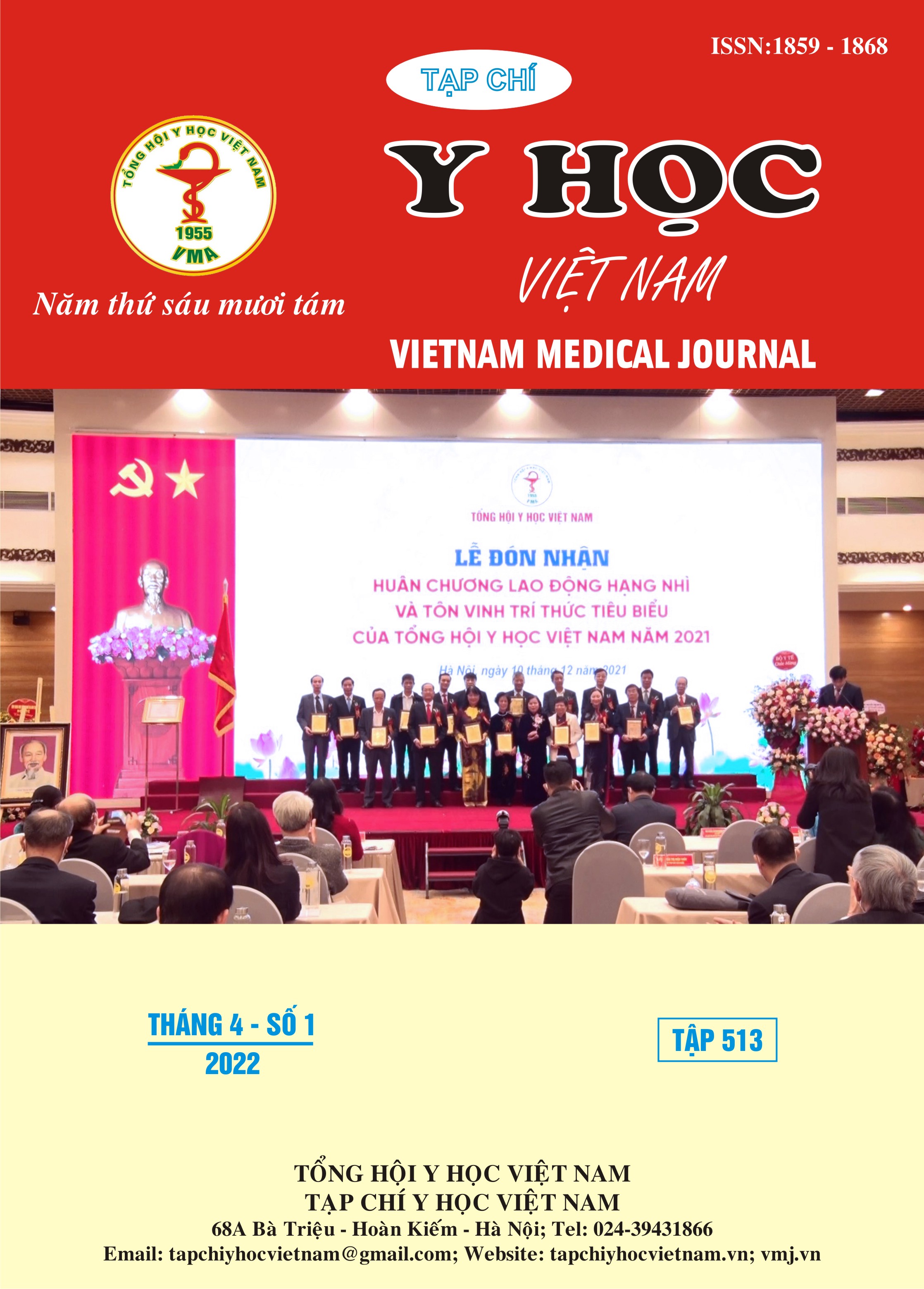THE CLINICAL CHARACTERISTICS OF PATIENTS WITH PALMA AND PLANTAR HYPERHIDROSIS AND TREATMENT RESULTS OF HB HERBAL MEDICATION FORMULAR
Main Article Content
Abstract
Objectives: Describe some clinical characteristics of patients with palmar and plantar hyperhidrosis and evaluate the results of HB herbal medication formular for treating palmar and plantar hyperhidrosis. Methods: use randomized clinical trial and compare results before-after treatment on 50 patients with palmar and plantar hyperhidrosis. Results: The average age was 24.02 ± 7.59 (years old), females were more likely to develop hyperhidrosis than males, the onset age of the disease at under 12 years old accounted for the majority of the studied patients (76%). After 1 month of treatment, the percentage of patients who had hyperhidrosis quite frequently decreased from 40.0% to 16.0% and the proportion of the ones who had hyperhidrosis fairly frequently declined from 54.0% to 18.0% (p < 0.05). The percentage of patients who developed level 3 (50%) and level 4 (16%) of hyperhidrosis underwent a drop to 12.0% and 4.0%, respectively (p < 0.05). The quality of life effect of hyperhidrosis: 16.0% of patients decreased 80% of the total symptoms and 58.0% of patients decreased 50% of the total symptoms. Conclusions: HB herbal medication formular improved clinical symptoms patients with palmar and plantar hyperhidrosis
Article Details
Keywords
palmar and plantar hyperhidrosis, HB herbal medication formular
References
2. Nguyễn Nhược Kim (2012). Bệnh tăng tiết mồ hôi. Bệnh học nội khoa y học cổ truyền. Nhà xuất bản Y học, Hà Nội, 169 - 174.
3. Trần Ngọc Lương (2004). Kết quả bước đầu qua 131 trường hợp đốt hạch giao cảm nội soi qua lồng ngực để chữa chứng ra mồ hôi tay. Tạp chí thông tin y dược học, 9, 33-37.
4. Hồ Nam (2007). Hậu quả không mong muốn của phẫu thuật nội soi cắt giao cảm ngực điều trị tăng tiết mồ hôi tay. Tạp chí Y học Thành phố Hồ Chí Minh, Tập 11, Số 2, 74.
5. Nguyễn Thiên Quyến và Đào Trọng Cường (2013). Chứng chân tay ra mồ hôi. Chẩn đoán phân biệt chứng trạng trong Đông y. Nhà xuất bản văn hóa dân tộc, Hà Nội, 91- 94.
6. Trần Hữu Vinh (2009). Nghiên cứu ứng dụng phương pháp đốt hạch giao cảm ngực qua nội soi để điều trị chứng ra mồ hôi tay và nách, Luận án tiến sĩ y học, Trường Đại học Y Hà Nội.
7. Alaa HAl-Farhan (2014). Evaluation of Botox treatment for patients with primary axillary hyperhidrosis in Basrah. Basrah Journal, Bas J Surg, June, 20.
8. Haider A. (2005). Focal hyperhidrosis: diagnosis and management. CMAJ, 172(1), 69 - 75.
9. Strutton DR, Kowalski JW, Glaser DA, Stang PE (2004). US prevalence of hyperhidrosis and impact on individuals with axillary hyperhidrosis: results from a national survey. J Am Acad Dermatol, 51(2), 241- 8.


